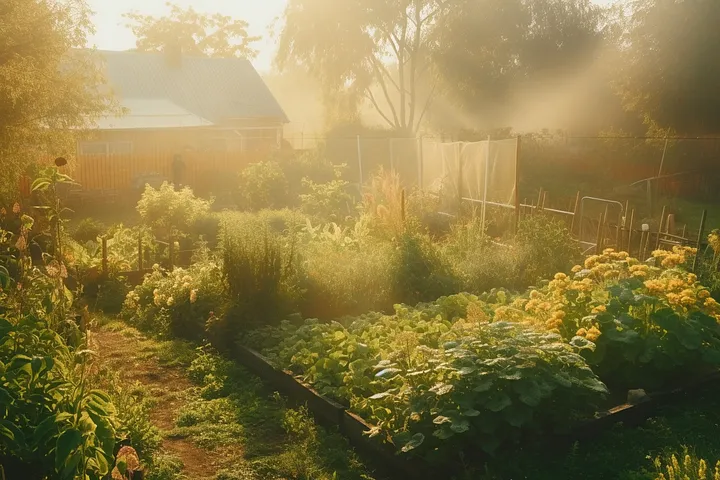Understanding the Potential Economic, Environmental, and Health Impacts of Self-Sufficiency in Food Production
Self-sufficiency and food sovereignty have gained much attention in recent years. With concerns about climate change, food security, and the health effects of industrial agriculture, many people are looking for alternatives to the current food system. One possible solution is for families to return to their gardens and grow food. This essay will explore the economy and life if every family could return to growing their own food in their own garden.
The Economic Impacts of Home Gardening
There would be significant economic impacts if every family could return to growing their food in their garden. One of the main benefits would be reduced money spent on food. According to the United States Department of Agriculture, the average American household spends $8,169 annually on food. If families could grow their food, they could significantly reduce this expense. In addition, families could save money by not having to purchase expensive organic produce from the grocery store.
Another economic impact of home gardening would be the creation of new jobs. As more families grow their food, there will be an increased demand for tools, seeds, and other gardening supplies. This would create new jobs in the gardening industry. In addition, local farmers’ markets and other food-related businesses would likely see an increase in demand as people start to look for locally-grown produce.

However, there would also be negative economic impacts of home gardening. One of the main drawbacks would be reduced demand for industrial agriculture. If more people were growing their food, there would be less demand for food from large-scale agricultural operations. This could result in job losses in the farming sector. In addition, tax revenue could be reduced as large-scale agricultural operations pay taxes on their land and other resources.
The Environmental Impacts of Home Gardening
Home gardening can have a positive impact on the environment. One of the main benefits is a reduction in carbon emissions. According to the Food and Agriculture Organization of the United Nations, the global food system is responsible for between 19% and 29% of all greenhouse gas emissions. This is due to using fertilizers, transportation, and other inputs required for industrial agriculture. Therefore, if more people were growing their food, there would be a reduction in the carbon emissions associated with the food system.
In addition, home gardening can help to reduce water usage. According to the Environmental Protection Agency, the average American household uses around 320 gallons of water daily. A significant amount of this water is used to irrigate lawns and gardens. If more people grew their food, they could use water more efficiently and reduce overall water usage.
However, there are also potential adverse environmental impacts of home gardening. For example, if families used chemical fertilisers and pesticides in their gardens, local waterways could be polluted and other ecological problems. In addition, home gardening can require a significant amount of land, which could lead to habitat destruction and other environmental issues if done on a large scale.

The Health Impacts of Home Gardening
Home gardening can have significant health benefits. One of the main benefits is increased access to fresh produce. According to the Centers for Disease Control and Prevention, only 1 in 10 Americans eat enough fruits and vegetables. This is partly due to the high cost of fresh produce, and many people need access to a grocery store that sells fresh produce. If more people were growing their food, they would have access to fresh produce at a lower cost.
In addition, home gardening can be a form of physical activity. According to the American Heart Association, physical activity can reduce the risk of heart disease, stroke, and other health problems. Gardening can be a low-impact exercise that can help people stay active and healthy. It can also provide mental health benefits by reducing stress and promoting relaxation.
However, there are also potential health risks associated with home gardening. For example, if families are using chemical fertilisers and pesticides in their gardens, this could lead to exposure to harmful chemicals. In addition, families need to follow safe food handling practices to avoid foodborne illness.
Case Study: Cuba’s Special Period
One real-life example of a large-scale shift towards home gardening is Cuba’s Special Period. In the 1990s, Cuba faced an economic crisis due to the collapse of the Soviet Union, which had been its leading trading partner. As a result, Cuba faced food shortages and had to look for alternative solutions.
One of the solutions was a shift towards home gardening. The Cuban government encouraged people to start growing their food to reduce the country’s import dependence. This led to a significant increase in home gardening, with many people converting their lawns and other spaces into gardens.
The shift towards home gardening had significant economic, environmental, and health impacts. On the economic front, it helped to reduce the country’s dependence on food imports and created new jobs in the gardening industry. On the environmental front, it helped to reduce the carbon emissions associated with food transportation and led to more sustainable agriculture practices. Finally, on the health front, it increased access to fresh produce and more physical activity.
Lessons Learned and Conclusion
The example of Cuba’s Special Period shows that a large-scale shift towards home gardening is possible and can have significant economic, environmental, and health impacts. However, it is essential to approach this shift carefully and thoughtfully to avoid potential negative effects.
Some critical considerations for a successful shift towards home gardening include:
- Education: Providing education and resources to families to ensure they use safe and sustainable gardening practices.
- Infrastructure: Developing infrastructure to support home gardening, such as community gardens, local seed banks, and farmers’ markets.
- Policy: Develop policies to support home gardening, such as tax incentives for families who grow their food and regulations to ensure safe food handling practices.
In conclusion, if every family could return to growing their food in their garden, there would be significant economic, environmental, and health impacts. While potential drawbacks exist, a carefully planned shift towards home gardening could lead to a more sustainable and equitable food system.






